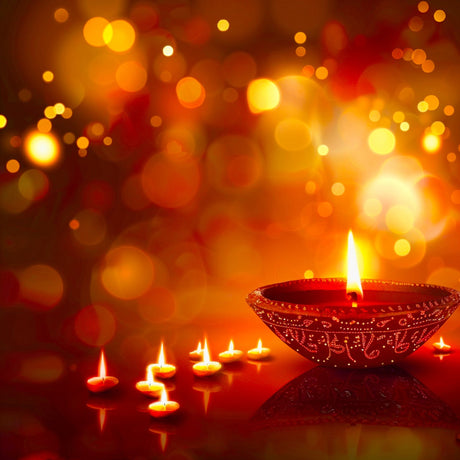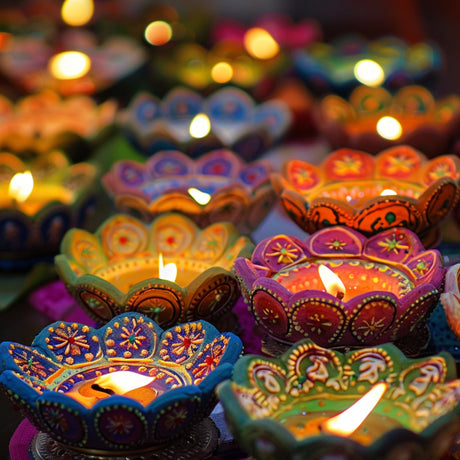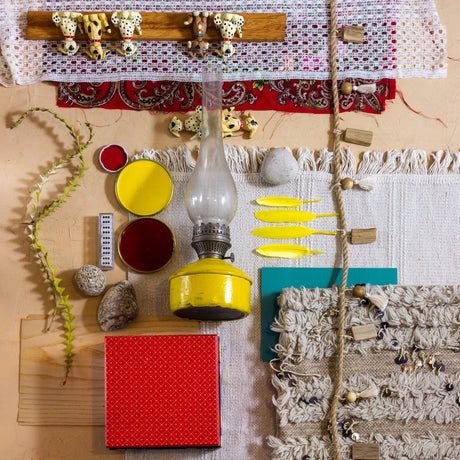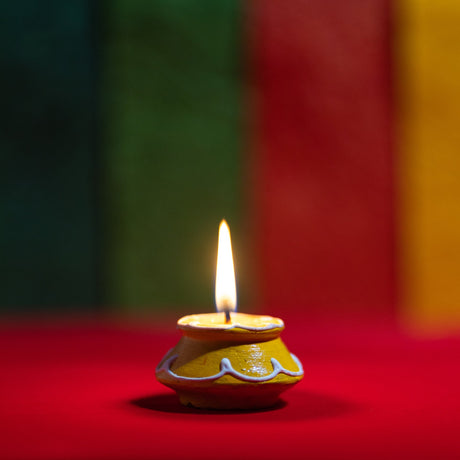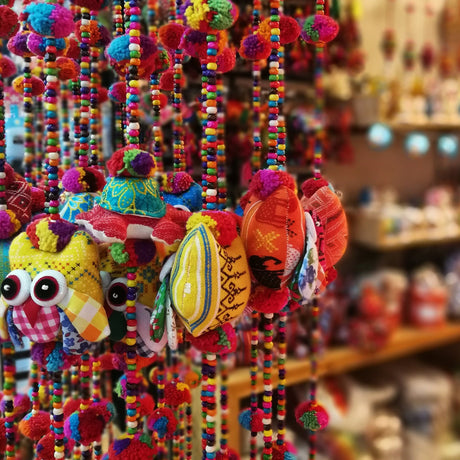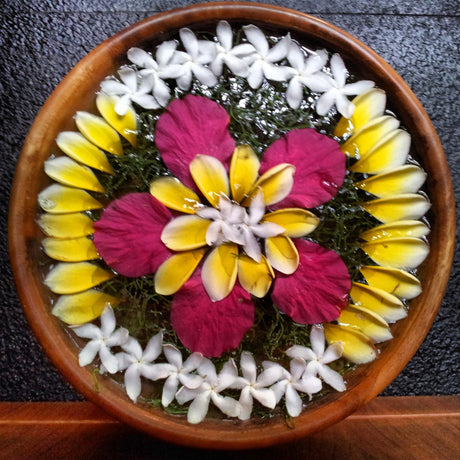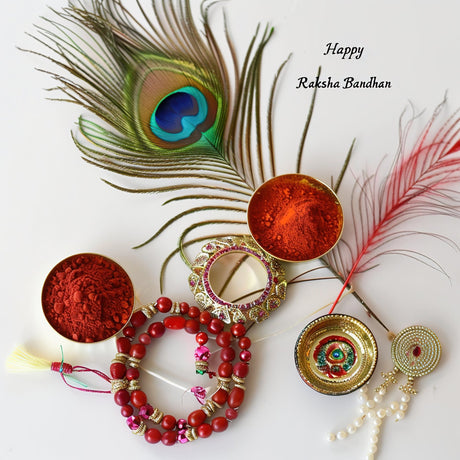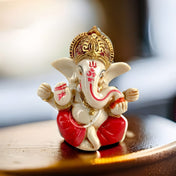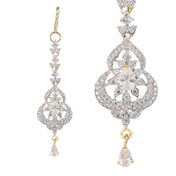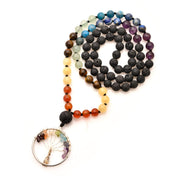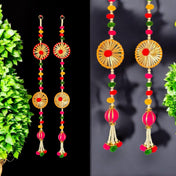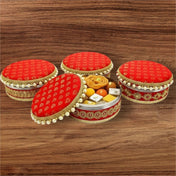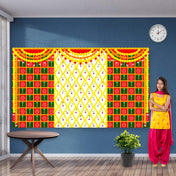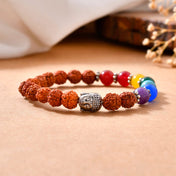Introduction
German Silver vs. Real Silver: Two materials that may look alike but have different uses and advantages. If you're into crafts and quality, knowing the differences between these metal alloys can be really interesting. At LoveNspire, we specialize in turning traditional art into timeless pieces. Our knowledge of these alloys can help you make better purchasing decisions. We offer a wide range of ethnic products and personalized gifts to choose from.
For example, check out our Screw Lock Nose Pin Bird German Silver Nath which features the distinct beauty of German Silver. On the other hand, if you're looking for genuine silver jewelry, our Adjustable Silver Toe Rings Pair Green Moti Indian Bichiya or Pinky Band Rings Barefoot Foot Jewelry made from real silver could be just what you need.
Knowing the main differences between German Silver and Real Silver helps you choose the right material for your requirements—be it durability, authenticity, or visual appeal. This understanding connects cultural heritage with contemporary living by making informed choices about silver alloys.
Understanding German Silver or Nickel Silver 
1. German Silver Composition Unlike Fine Silver
Despite its name, German Silver is not actually silver; it is a copper-nickel-zinc alloy. This alloy typically contains around 60% copper, 20% nickel, and 20% zinc. It does not have any silver content, making it an affordable alternative to real silver.
2. Properties of German Silver That Distinguish It
Known for its strength and durability, German Silver is resistant to corrosion and tarnishing. It retains a bright appearance similar to silver, making it a popular choice for various decorative items.
3. Uses of German Silver in Preparing Silver-plated Items
Common applications of German Silver include tableware, silverware, and decorative pieces. Its aesthetic appeal and affordability make it a preferred choice for items like cutlery, trays, candle holders, and jewelry components. By understanding the composition, properties, and uses of German Silver, you can appreciate its unique characteristics and versatility in different products. For instance, Marathi pearl nath nose pins and oxidized german silver clip on nath marathi nose pins are examples of jewelry that utilize this versatile material.
Exploring Sterling Silver as a Best Solid Silver Option 
Sterling Silver Composition as a Quality Silver
Sterling Silver is known for its unique combination of purity and durability. It is made up of 92.5% pure silver mixed with 7.5% copper or sometimes other metals like zinc or nickel. This specific mixture makes the metal stronger without losing its natural shine and flexibility, making it suitable for various uses while still keeping the genuine qualities of silver.
Characteristics of Sterling Silver Pieces
Sterling Silver has several key features that set it apart:
- Authenticity: Sterling Silver is valued for its genuine silver content, which is often stamped with the hallmark "925" to indicate its purity level.
- Value: Being a precious metal, sterling Silver holds lasting worth, appreciated both in craftsmanship and as an investment.
- Appearance: It has a bright, reflective finish that can be polished to maintain its shine, although it may tarnish over time due to the copper content.
- Workability: Sterling Silver is easy to shape and engrave, allowing for intricate designs that preserve cultural artistry.
Applications of Sterling Silver Base Metal
Sterling Silver is commonly used in:
- Jewelry: Rings, necklaces, earrings, and bracelets made from Sterling Silver are not only visually appealing but also hold sentimental value. For example, a Marathi nath nose pin crafted from Sterling Silver showcases its versatility and beauty.
- Fine silverware: Cutlery, serving pieces, and decorative table settings benefit from the alloy's combination of elegance and durability. A small golden/silver kumkum holder jewelry box exemplifies how Sterling Silver can be incorporated into functional yet exquisite items.
- Collectibles and heirlooms: Its durability makes Sterling Silver ideal for objects intended to be passed down through generations.
This alloy strikes a perfect balance between tradition and practicality, embodying cultural heritage while fulfilling modern demands for quality and sophistication.
Key Differences Between German Silver and Real Silver as Different Type of Silver Items 
Composition Variations Between German and Sterling Silver
- German Silver: primarily composed of copper, nickel, and zinc with no actual silver content.
- Sterling Silver: consists of 92.5% pure silver and 7.5% copper or other metals for added durability.
Purity Levels in Both Alloys as Silver Grades
- German Silver does not contain real silver, hence lacks the purity associated with genuine silver.
- Sterling Silver is renowned for its high purity level of 92.5%, making it a sought-after material for jewelry and fine items.
Understanding the Key Differences Like Silver Plating and When to Choose Which for Better Understanding of Silver Purity
- Appearance: German Silver has a bright, silvery appearance resembling sterling silver but without the same luster due to its lower silver content.
- Durability: Sterling Silver is more durable and resistant to tarnishing compared to German Silver, which may require more maintenance.
- Cost: German Silver is often more cost-effective than Sterling Silver due to its composition and availability of materials.
- Usage: While German Silver is suitable for decorative items and tableware, Sterling Silver is preferred for jewelry and high-end silverware.
By understanding the composition variations and purity levels between German and Sterling Silver, you can make an informed decision based on your preferences for appearance, durability, cost, and intended usage. Each alloy offers unique characteristics that cater to different needs and aesthetics, so selecting the right one depends on your specific requirements.
When to Choose German Silver Considering This Silver Contains No Actual Silver?
Strength vs. Value in Choosing Alloys
German Silver offers a compelling blend of durability and affordability that makes it an attractive option for various applications. Its composition—primarily copper, nickel, and zinc—lends exceptional strength and resistance to corrosion, which proves ideal for items subjected to regular handling or wear.
Consider these benefits when opting for German Silver:
- Robustness: The alloy’s tensile strength surpasses that of real silver, making it less prone to dents and scratches.
- Cost-effectiveness: Without containing actual silver, German Silver provides a budget-friendly alternative without compromising on visual appeal.
- Maintenance ease: It requires minimal upkeep compared to Sterling Silver, which can tarnish over time.
Aesthetics play a significant role in the appeal of German Silver. Its naturally bright, silvery sheen closely mimics silver’s look but with a slightly warmer undertone. This makes it suitable for decorative items, tableware, and fashion accessories where appearance must harmonize with function.
Functionality further drives the choice toward German Silver in contexts demanding toughness over intrinsic value. For instance:
- Everyday cutlery sets designed to endure frequent use
- Ornamental pieces requiring long-lasting shine without delicate care
- Costume jewelry that balances style with resilience
Choosing German Silver becomes a practical decision when prioritizing strength and cost without sacrificing classic elegance. It bridges traditional aesthetics with modern-day demands for durability and affordability.
When to Choose Sterling Silver Instead of German Silver Items?
Authenticity and Value Considerations with Alloys
Sterling Silver stands apart for its authenticity—containing 92.5% pure silver, it carries the intrinsic value of real precious metal. This purity not only appeals to those seeking genuine materials but also ensures a level of prestige and trust in the product's quality. Choosing Sterling Silver means embracing an alloy celebrated for its natural beauty and timeless elegance.
Jewelry and fine items crafted from Sterling Silver are prized for their durability paired with a remarkable luster that deepens with age. While Sterling Silver does require some maintenance—such as occasional polishing to prevent tarnish—the effort preserves its brilliance and extends the life of treasured pieces. This balance between care and longevity makes Sterling Silver ideal for heirloom-quality items meant to be worn or displayed for generations.
Consider these factors when selecting sterling silver:
- Real silver content guarantees authenticity and inherent worth.
- Longevity supports lasting beauty with proper upkeep.
- Maintenance practices like cleaning rituals enhance appearance without compromising integrity.
- Suitability for fine craftsmanship, allowing intricate designs that showcase cultural artistry.
Choosing Sterling Silver reflects an appreciation for genuine materials and enduring style, perfect for meaningful gifts or personal adornment where authenticity matters deeply.
LoveNspire Helps You Decide Between German Silver and Real Silver Purchase
LoveNspire is here to help you choose between German Silver and Real Silver. With a deep understanding of culture and craftsmanship, the brand focuses on individual needs and preferences to make the decision-making process easier.
Here are some key factors that we consider:
- Purpose and Usage: Whether you're looking for durable decorative items like our Om aluminum silver incense holder or precious jewelry such as the triple layer pendant necklace, understanding how you plan to use the item will help determine if strength or authenticity is more important.
- Aesthetic Preferences: The bright, polished look of German Silver is perfect for modern décor, while the warm, genuine sheen of Sterling Silver suits timeless elegance.
- Budget Considerations: We advise on balancing cost-effectiveness with value retention, recognizing German Silver’s affordability against Sterling Silver’s investment appeal seen in items like our adjustable silver toe rings.
- Maintenance Expectations: Guidance is provided on upkeep demands—German Silver’s low maintenance versus Sterling Silver’s need for gentle care to preserve its luster, as experienced with our American diamond maang tikka which requires careful handling.
- Emotional and Cultural Significance: For those valuing symbolism and heritage, we ensure customers appreciate the cultural stories behind each alloy choice.
This approach helps customers understand the differences between German Silver and Real Silver, so they can make a confident decision based on their lifestyle and aspirations.
Conclusion
When it comes to silver alloys, choosing between German Silver and Real Silver or Sterling Silver depends on several factors. It's important to understand the specific qualities of each alloy in order to make a decision that suits your needs and preferences.
Key points to consider:
- German Silver: This alloy is a great choice if you value strength and affordability in your silver products. Its combination of copper, nickel, and zinc makes it durable and gives it a shiny look, making it suitable for various items such as cutlery and decorative pieces.
- Sterling Silver: Go for Sterling Silver if you want high purity (92.5% silver) and authenticity. It's perfect for jewelry and fine silverware, exuding elegance and worthiness. This alloy is a timeless option for special items that require durability and care.
In the world of silver, whether you prefer the cost-effectiveness and toughness of German Silver or the traditional beauty of Sterling Silver, both alloys have their own benefits that cater to different needs and tastes. Let LoveNspire help you navigate the complex world of silver alloys to find the ideal combination of style and function that you're looking for.


